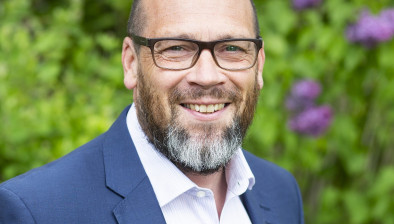Inclusion and equality in construction requires ‘fresh mind set’, says Aggregate Industries
 Despite important progress made in recent years, there is still a massive job to do in creating a more inclusive and diverse workforce in the construction industry – one which requires a brand new mind-set, the Contracting Division of building materials supplier Aggregate Industries has stated.
Despite important progress made in recent years, there is still a massive job to do in creating a more inclusive and diverse workforce in the construction industry – one which requires a brand new mind-set, the Contracting Division of building materials supplier Aggregate Industries has stated.
According to latest figures, around 5% of working adults in the UK are currently employed in construction-related jobs but being a male-dominated industry, women make up just 20% of that workforce. This gender equality gap is particularly alarming when you consider that like many industries, construction continues to face a major skills deficit.
In a recent report, Highways UK estimates that in order to meet the UK government’s £15 billion investment into the Strategic Road Network it will require an additional 40,000 engineering and constructions workers by 2020.
With this in mind, the Contracting Division of Aggregate Industries, has started by setting equality targets to achieve a 30% gender balance by 2030. It believes that the industry needs to adopt a new way of thinking if it is to succeed in attracting more women and young people into operational roles.
Paddy Murphy, managing director of contracting services at Aggregate Industries, said: “Attracting a more diverse workforce to the sector is no longer just about addressing gender equality, but is increasingly an essential part of building the highly skilled and trained workforce we require to meet the government’s ambitious plans for upgrading the UK’s road infrastructure.
“In order to make a meaningful impact in driving recruitment in what is traditionally a man’s world, the industry must adopt new techniques to better accommodate a diverse range of people. This starts with a root and branch approach, one that looks at changes that must be made to behaviours, working conditions, equipment and recruitment policies.”
What’s often overlooked, reveals Aggregate Industries, is that much of the equipment and machinery used in the industry such as rollers and pavers, are old fashioned; with manual controls; featuring steep gradients and hard-to-reach entry points that essentially make it inaccessible to some.
Paddy added: “By incorporating measures such as upgrading to more captivating automated machine controls; folding steps; and all-round vision into all equipment and machinery going forward, is just one of the ways to ensure our working environment is inclusive.
“Meanwhile, to make it easier to spot and nurture talent other policies to consider are increasing the visibility of operational roles with a variety of audiences and removing gender bias in recruitment. We are attending schools and colleges and encourage a 50/50 split of male and female candidates during the interview stages when recruiting for new operational-related roles. After all, with studies showing firms with a diverse workforce boast better business performance3, it is now more important than ever to address diversity and inclusion if we are to retain our position as a world-class industry that leads the way in innovation.”























